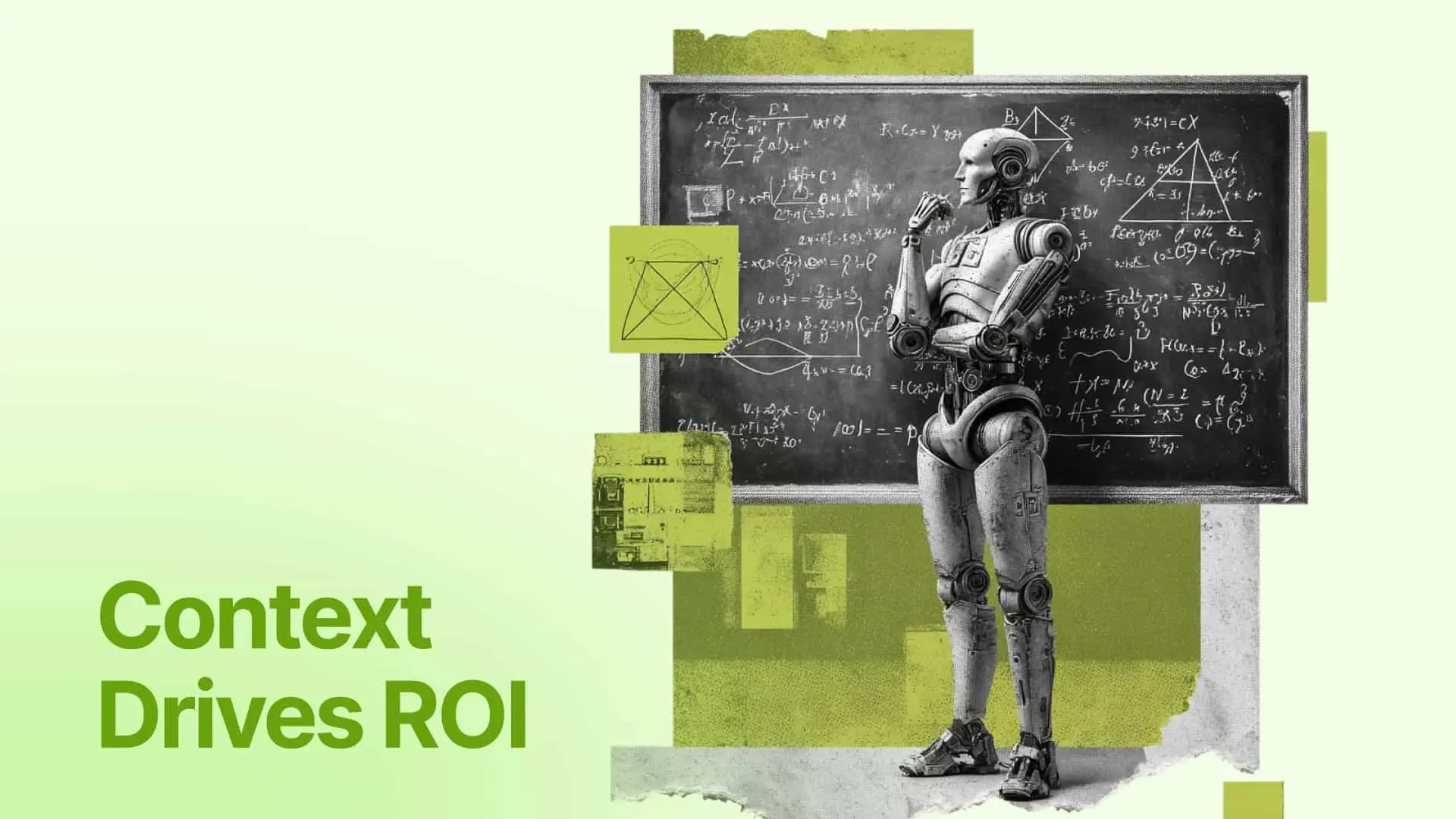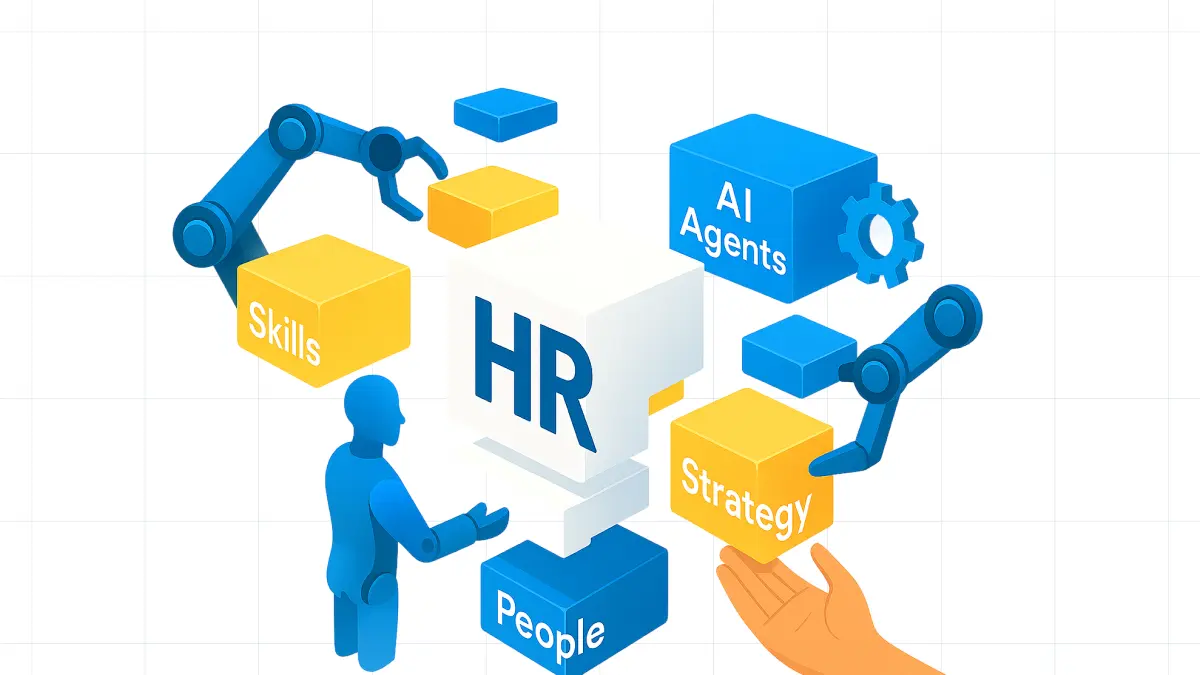AI is now shaping our ways of finding, connecting, and hiring talents more than ever.
Our report on the top 40 AI in HR tools showed dominance in recruitment and talent acquisition applications, which generated 12.2 million monthly visitors and 356,000 searches.
There are definitely more AI recruiting software on the market to help hiring managers and recruitment teams outwork their competitors.
Whether it's enhanced AI features in your core recruitment tools or standalone add-ons, there are already numerous AI solutions to assist with even more recruiting tasks:
- Writing and optimizing JDs
- Sourcing candidates
- Screening applications
- Scheduling interviews and updating candidates
- Answering FAQs and following up with job seekers
- Carrying out candidate assessments
- Managing talent pools
- and more.
AI has certainly lightened the load, but it might also leave you wondering, 'What’s my role now?' This is a question many recruiters are grappling with, and it’s an entirely valid concern.
The answer lies in doubling down on the tasks that require your unique human abilities—but I know it’s not that simple.
To help navigate this shift, I’ve drawn insights from our conversations with AI innovators, researchers, and practitioners in the field to break down the answer(s).
Here are five expert-approved critical human touchpoints that recruiters should invest their time and effort in to stay ahead in the future of AI recruiting.
1. Stay in the Loop and Lead with Informed Decisions
AI and machine learning unlock lots of abilities beyond automation to speed up hiring tasks and do them better at scales for various functions across the entire recruitment process.
However, Human-in-the-loop AI is a critical approach for AI development and deployment to ensure that the technology works for and because of humans. AI-generated outcomes should always be monitored, guided, and approved by a person.
For example, AI can scan and rank thousands of applications in seconds, narrowing down the pool to those who match specific criteria. But who decides what parameters the tool should use to qualify candidates? That’s where human judgment comes in.
David Paffenholz highlights this in the context of outbound talent sourcing. He notes that there are numerous decision points where human judgment is essential:
“There are a lot of decision points. There are a lot of different types of candidates that one can find who really have an understanding of what a specific company's culture looks like, what the types of profiles and backgrounds are that one hires, and whether there's a specific weighting that one places on specific skills and backgrounds that we know will help them succeed at that company.” - David Paffenholz
He also concludes:
“That company-specific knowledge is what the recruiter brings to the table that the AI will really struggle to replicate. And so the AI is a powerful assistant, but it's just that it's only an assistant.” - David Paffenholz
To work well with AI, you might want to sharpen your abilities to critically evaluate AI-generated results and insights, as well as bring unique human takes around business objectives, cultural context, and the nuances of human interaction—areas where AI is still catching up, to the table.
Former Google X talent leader and fractional CHRO AJ Thomas emphasizes that working with AI cannot be “set and forget”:
“Especially when it comes to new technologies, it requires a deep amount of curiosity, and it requires a deep amount of making sure you have enough perspectives to make an informed decision around how you interact with them—basic principles of interaction in any sense.” - AJ Thomas
“We always have to be in the loop about that, reviewing it, looking at it, and having a discerning eye around what it actually is that it's come out with. So that we can validate that is the right of generative interaction that we have, and it can then create more capacity for us to actually think about things even further, treating it really more as a perspective that can help inform us as humans. I think that's the piece that we need to be thinking about when we think about humans in the loop.” - AJ Thomas
Another approach that may be the future of AI in recruiting is carving more of a role for the human. Rather than having the 'human in the loop,' as experts including AJ Thomas and Q Hamirami told us about, PwC Netherlands focuses on having the human lead.
Their "AI in the Loop" concept focuses on keeping the human leading processes and having the AI fill out the parts that humans no longer need to waste time on.
As Marlene de Koning, PwC Netherlands' HR Tech Director told us:
“If you think about what we're doing, we have tasks that we want to automate with AI. That means that the human is always in the lead and running it where the AI comes in the loop, wherever it's necessary or wherever it adds value to the human. I think that's a different type of mindset when you're talking about the implementation of AI, one that AI sees as more fit because it also makes you think more as an organization.” - Marlene de Koning
2. Define, Clarify, Align on Role Requirements

AI steps in and helps a lot with recruitment efficiency, especially for companies with high hiring volumes and stretched recruitment capacities. But the actual hiring success boils down to how well it aligns with your business needs and role requirements.
If things go wrong at the level of defining job descriptions and requirements, then it almost doesn’t matter what happens in the next stages.
“Oftentimes, the searches that we see are unsuccessful or that we use as unsuccessful test cases on the platform are where there's some misalignment or misunderstanding of what the right candidate looks like.” - David Paffenholz, Founder of Juicebox, whose product PeopleGPT for talent acquisition.
“And that's where, in that initial search setup piece, that intake meeting, that intake call with the hiring manager, is so crucial and really hard to replicate from a pure AI perspective. And so being able to understand, push back, and change the search, I think, will continue to be crucial.” - David Paffenholz
According to Ashutosh Garg, CEO of talent intelligent platform Eightfold, being crystal clear about who you’re looking for also aids in employee retention and internal mobility. And this is important to develop impactful recruitment strategies, which are more strategic to spend time on.
He suggests that when you clearly identify the skills and roles needed when planning the workforce, it becomes easier to place employees in positions where they can thrive, up-skill where necessary, and retain the right talent when the landscape changes and your business evolves.
“What you want to do first is make sure you're able to retain the right people. Second, you want to make sure that people, if they're not in the right job, can be moved around so that they stay with you and deliver. If there are people who have the skill set but are lacking a few things here and there, you can up-skill or re-skill them so that they meet their future needs.
Then you look at your alumni and say, Do you have an ongoing relationship with them because they are maybe the best source of talent for you? They are the biggest brand ambassadors. And then, wherever there is a gap, can you actually identify who the right people are to hire and recruit them efficiently at scale.” - Ashutosh Garg
3. Act on Data

People analytics has always been essential in HR, helping leaders make informed decisions about their workforce. In recruitment, this means understanding and acting on recruitment metrics and talent metrics to improve the process and quality of hires.
The power of AI is its ability to process large amounts of complex data and generate insights that reveal patterns and connections.
“The potential of AI is anywhere where there's a lot of data available, be it structured or unstructured data. That's where AI can often have an outsized impact. And recruiting is a great example of that. There's huge amounts of talent data out there. A lot of it is unused. Some of it is structured. A lot of it is unstructured. And large language models provide us with the first real opportunity to use that data effectively.” - David Paffenholz
“Through AI, what we are able to do is democratize that information for everyone. Everyone has access to the same assistant, and that helps a lot.” - Ashutosh Garg
In short, it makes our lives easier by automatically delivering organized, visualized, and comprehensive information directly to our fingertips. However, the real value comes from acting on these insights and being able to do it quicker and better over time.
For example, with David’s PeopleGPT, which provides summaries of candidate profiles, you still need to review each one to approve the next steps or adjust the search if the results are off-mark.
Similarly, Ashutosh Garg's product offers a sophisticated understanding of talent interactions and roles. But again, how do you respond to these insights and adjust your strategies, which require more critical thinking and nuanced decision-making?
4. Become a Talent Advisor

Perhaps all recruiters should become talent advisors in the future of AI recruiting. Barb Hyman poses a thought-provoking question:
“And so by seeing this data as something that helps them do a better job and spend a lot less time with many candidates, they're spending more time with fewer candidates, but most importantly, they're spending time in the business. Because I think the key thing that doesn't yet look like it's working is recruitment, what am I looking for?
What's really important for this role? And if they could be more of a talent advisor, rather than screening a thousand candidates based on their views of what great looks like, I think the organization will be better off, and they'll have a better job.” - Barb Hyman
She suggests that what sets the best recruiters apart are their abilities to:
- Deeply understand the candidates.
- Deliver candidate analysis in an informative way for hiring managers to make decisions.
- Go beyond and propose suggestions to unlock the full potential of hires.
“Think again about what the best recruiter would do. They would say I've interviewed Barb very deeply on all of these dimensions. Here's how she scores on each dimension. Here's why, and here's what it means for you in terms of whether you should put her in that position or not.
…I've always believed that no one wants to see an assessment without knowing what the “so what” is. So being able to give live coaching about this is where Barb will really thrive. This is where she might struggle, and this is what you can do to support her. That's what makes it human. You're meeting the hiring manager where they are. You're really helping them and guiding them to make the right decision.” - Barb Hyman
5. Build Genuine Relationships
AI falls short when it comes to the nuanced understanding of human emotions, ethics, and unspoken social cues.
As David pointed out, it’s the personal stories, the shared experiences, and the ability to connect on a deeper level that often tip the scales:
“You're trying to be creative in how you go about that. Convince the right candidate to join by selling to the candidate and bringing them into that process. And I think that's where I struggled to see AI taking on that human bit, and even if AI becomes three steps better, then it's human interaction, and unless something really drastically changes, I think the thing that gets humans most excited or that gets them to buy into something is hearing from them, hearing their story, understanding why they want to join, and being able to act on that.” David Paffenholz
It’s not about having deep conversations with everyone (we never have enough time to do so!), but having better conversations with shortlisted ones.
6. Design Positive Candidate Journey
Continuing on the previous point, it necessitates employers to customize recruitment processes to have more meaningful time for potential hires while ensuring that all applicants, even those who aren't selected, have a positive experience.
And that needs much of your brainpower! Brainstorm on what makes the candidate feel valued, what encourages them to complete the application journey, how to better assess their fit for the role and for the team, and so on.
Then, you might go outside the box to break away from conventional ways and design a better journey that serves your purposes and intents. Incorporate touchpoints that allow candidates to express their stories, share their motivations, and feel heard.
It’s not about the platform being less humane but about what happens there and how it happens.
“It’s interesting how some clients initially almost dumbed down candidates, particularly for retail roles. They felt that they couldn't be bothered to complete this chat and that they'd rather just, I don't know, engage with a pretty simple, dumb chatbot, but we don't see that. People want to share their story. Tell us, Daan, what's the thing that's really brought you incredible happiness in your life? Or what's the best example that you can share of a team that you were part of? What did you love about that? It's your story. It's who you are.” - Barb Hyman
Final Thoughts: Team Up with AI and Become Better Recruiters
Across five lessons from experts who are either actively integrating AI into their workforce or researching the technology to its core to deliver human-centric AI recruitment solutions, it’s clear that rather than being intimidated by AI, it’s time to embrace it to hire smarter, faster, and better.
“I think where technology is going is it's about AI that gives people agency, so the sphere of AI that weaponizes your data or AI that is used by someone else to your detriment, I think what's so exciting about conversational AI is it's giving you agency, and it's helping you shape your career, and your own your decisions. And I think that power in the hands of the individual is incredibly motivating, and it's really what's going to drive towards the ultimate goal in hiring, which is retention.” - Barb Hyman
Remember, AI won’t take away your job, but someone with AI will.
And this means, in short, you need to 1) learn to co-pilot effectively with AI and 2) focus more on creativity, empathy, and strategic thinking.
A final quote from David to capture where recruiters should aim in the future of AI recruiting:
“I do think that the role of the recruiter is going to evolve. It's going to become more strategic. It's going to become more managerial. It's going to become more candidate-facing. And I think those are largely good things.” - David Paffenholz
























